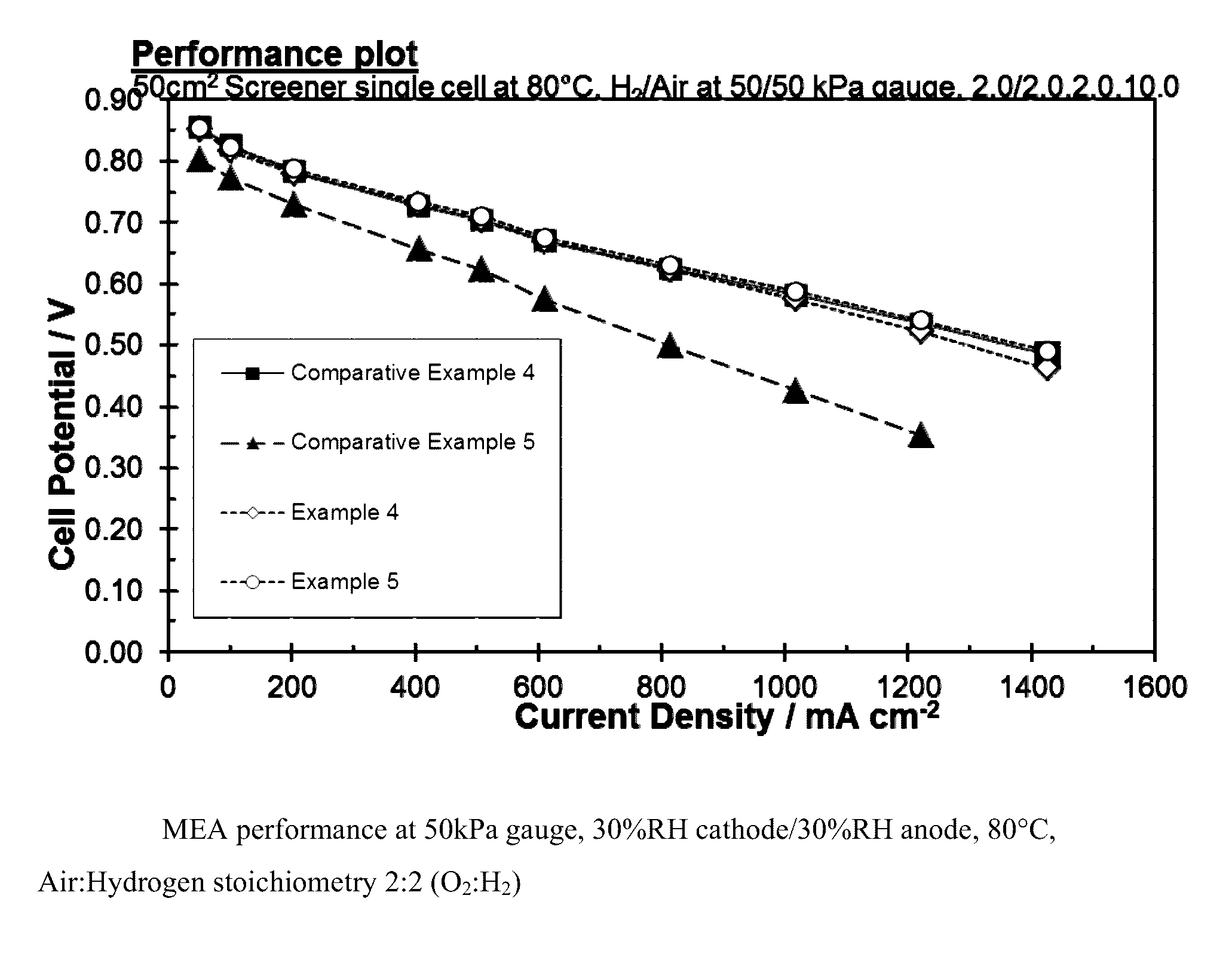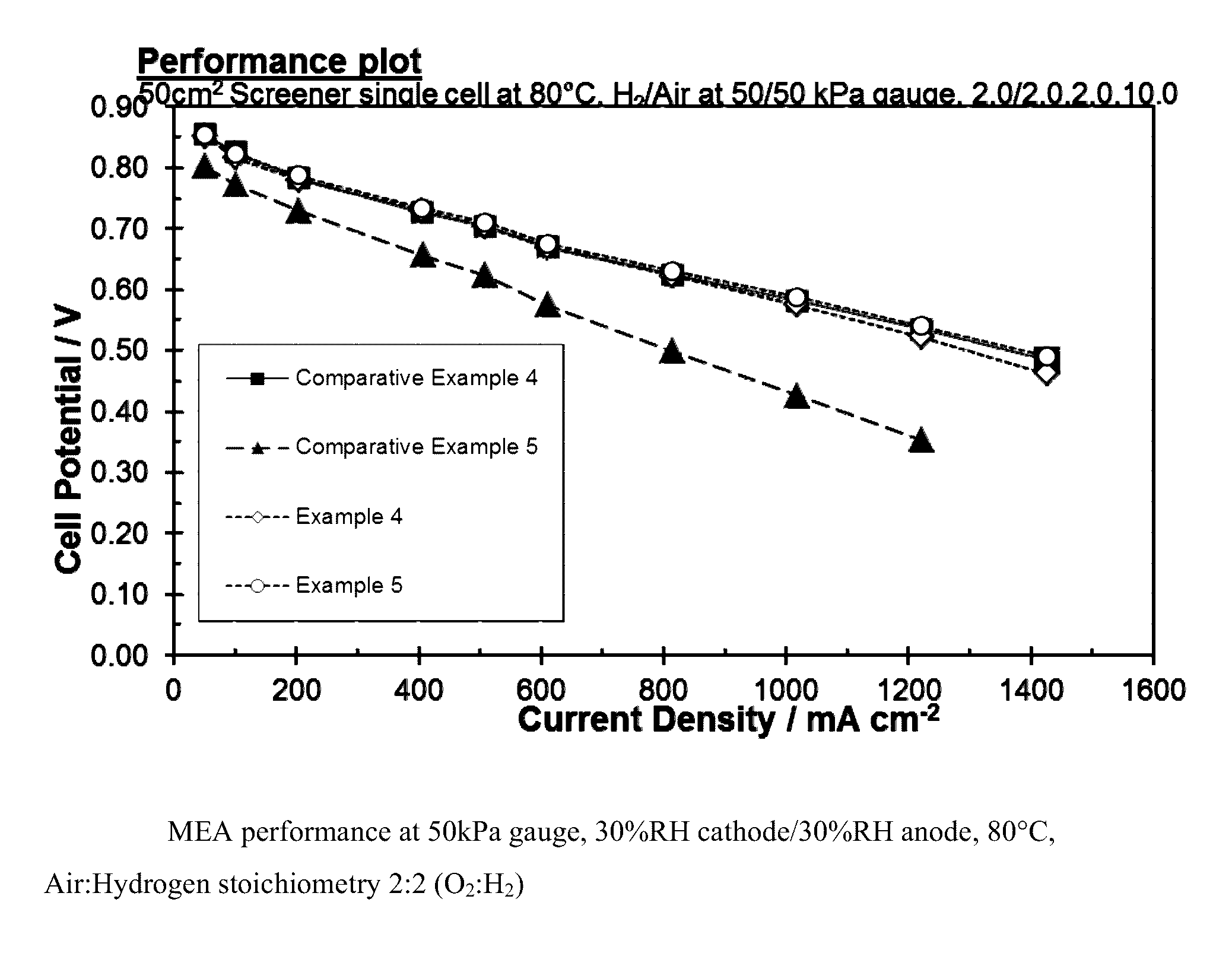Carbon supported catalyst
a carbon support and catalyst technology, applied in the field of new materials, can solve the problems of electrochemical oxidation (corrosion) and loss of carbon support, collapse of catalyst layer structure, and increase of potential at both electrodes
- Summary
- Abstract
- Description
- Claims
- Application Information
AI Technical Summary
Benefits of technology
Problems solved by technology
Method used
Image
Examples
Embodiment Construction
[0014]The carbon support material has a specific surface area (BET) of 100 m2 / g to 600 m2 / g, suitably 250 m2 / g to 600 m2 / g, preferably 300 m2 / g to 600 m2 / g. In an alternative embodiment, the carbon support material has a specific surface area (BET) of 100 m2 / g to 500 m2 / g, suitably 250 m2 / g to 500 m2 / g, preferably 300 m2 / g to 500 m2 / g. In a further alternative embodiment, the carbon support material has a specific surface area (BET) of 100 m2 / g to 400 m2 / g, suitably 250 m2 / g to 400 m2 / g, preferably 300 m2 / g to 400 m2 / g, and most preferably 100 m2 / g to 300 m2 g. The determination of the specific surface area by the BET method is carried out by the following process: after degassing to form a clean, solid surface, a nitrogen adsorption isotherm is obtained, whereby the quantity of gas adsorbed is measured as a function of gas pressure, at a constant temperature (usually that of liquid nitrogen at its boiling point at one atmosphere pressure). A plot of 1 / [Va((P0 / P)−1)] vs P / P0 is then...
PUM
| Property | Measurement | Unit |
|---|---|---|
| wt % | aaaaa | aaaaa |
| temperature | aaaaa | aaaaa |
| temperature | aaaaa | aaaaa |
Abstract
Description
Claims
Application Information
 Login to View More
Login to View More - R&D Engineer
- R&D Manager
- IP Professional
- Industry Leading Data Capabilities
- Powerful AI technology
- Patent DNA Extraction
Browse by: Latest US Patents, China's latest patents, Technical Efficacy Thesaurus, Application Domain, Technology Topic, Popular Technical Reports.
© 2024 PatSnap. All rights reserved.Legal|Privacy policy|Modern Slavery Act Transparency Statement|Sitemap|About US| Contact US: help@patsnap.com









